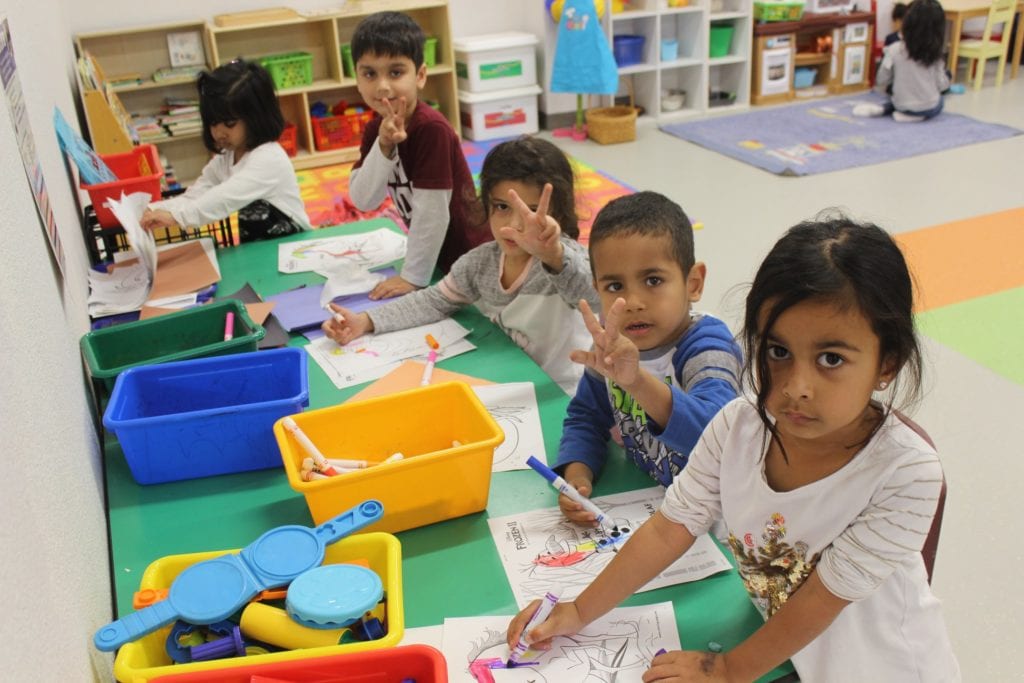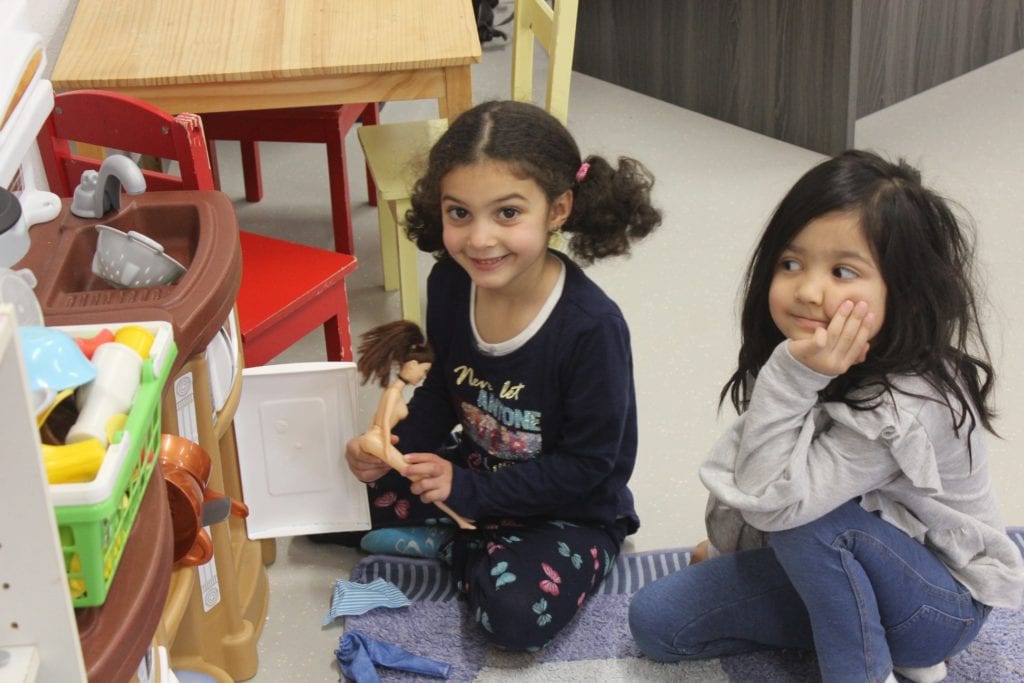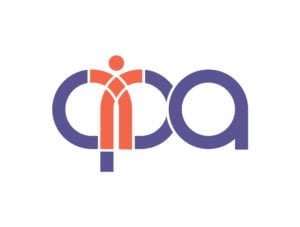Prep-K Curriculum
Active Academics: Learning by Doing, Moving, Singing, Touching, Crafting, and Making Messes


- Language Arts Phonics
- Language Arts Printing
- Language Art Reading
- Language Art Library
Prep-K students learn to identify capital and lower case alphabet letters and produce the sounds they make. Games, crafts, stories, and riddles help them identify each letter as a beginning sound. Students learn that letters are put together to make words. Consonants and vowels are introduced as the two kinds of letters in the alphabet.
Prep-K students are given the opportunity to use pencils, crayons, markers, scissors, and paints to develop and strengthen the small muscles in their hands. Students are introduced to the correct way to hold writing instruments and scissors as well as printing posture at the tables. They practice coloring within the lines, cutting on straight and curved lines, forming numbers and letters and printing their name.
Prep-K students have many stories read to them in the classroom. They learn that reading is an important way to gather information to help them learn. Reading is also presented as a form of enjoyment through poems, nursery rhymes, and finger plays. Reading readiness skills are taught including positional words, rhyming, identifying likenesses and differences in pictures and letters, and sequencing pictures and thoughts.
Prep-K students learn to appreciate literature by listening, observing, and answering questions as books are read to them. They are introduced to the parts of a book and the rolls of the author and illustrator in creating the story. Students are taught how to handle and care for books and are given the opportunity to choose and check-out library materials.
- Mathematics
- Science & Social Studies
- Art
- Physical Education
- Critical Thinking
- Imagination
Prep-K students are given the opportunity to reason and problem-solve using a variety of manipulatives and games. They learn to recognize shapes and to extend simple patterns as well as make new ones of their own. Students learn to recognize and order the numbers 1-20. They are given practice in sorting, graphing, counting out objects, comparing sets, and measuring.
Social Studies and Science lessons are integrated into the other areas of the curriculum. Students learn about an animal each week that goes along with letter recognition. Weather and the change of seasons are taught during calendar math time. Lessons on friends, family, pets, transportation, planting, harvesting, and holidays as well as important people and events in our country’s history are taught seasonally.
Prep-K students learn to draw upon personal experiences as well as their imagination as a basis for their art. Students work with a variety of materials and art tools such as paints, paper, crayons, glue, and scissors as well as unconventional media in planned projects and free expression lessons. The process and experience is more important than the final product at this age.
Prep-K students are given the opportunity to exercise their bodies in individual, group, and relay activities incorporating walking, running, hopping, tiptoeing, jumping and dancing. Students learn to listen, follow directions and participate in activities that strengthen their large motor skills. These activities include the use of balls, hula hoops, jump ropes, parachutes, cones, bean bags, stuffed animals, scooters, mats, and ribbons on sticks.
Prep-K students are guided through lessons that help them develop critical thinking skills. Using games, group activities, listening stations, and hands-on materials students learn to problem solve, reason, strategize and express their thoughts verbally. They are taught to consider all the possibilities when playing games, comparing, classifying, sequencing, patterning, and planning.
Young children are open and willing to see the world in so many ways. Students are given the opportunity to create something new and original in an encouraging environment using drama, puppetry, rhythm instruments, and creative writing.


